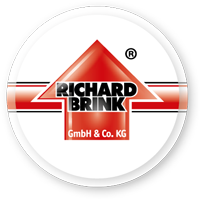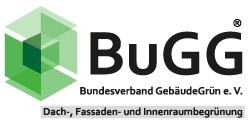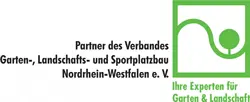Responding to the high volume of local public transport services running through Gelsenkirchen, the city commissioned the large-scale modernisation and revamping of the central bus station in an effort to provide a clearly organised, easy-to-navigate space for passengers and other visitors. After months of construction, the area of the bus station now meets these requirements, thanks to clearly marked crossings and a central island for quick changes. Benches and roof structures overhead create a pleasant space for passengers to pass the time in, as do the planted raised beds from Richard Brink GmbH & Co. KG, which were installed in a total of five places.
The raised beds are planted with individual shrubs, herbaceous perennials, flower seeds and over 3,000 flower bulbs, lending the central bus station a burst of blooms and greenery in the spring and summer, and providing functional balustrades year-round along two stairways as well. Towards the station forecourt and along an edge where the station meets the street, parts of the planting systems even protect passengers from falling from the elevated level of the central bus station.
Sophisticated, precise fit
Richard Brink offers its customers a great many options when it comes to planning and designing bespoke raised beds. The planting systems are made of stainless steel, aluminium or COR-TEN steel in thicknesses of 3, 4 and 5 mm; single-piece lengths of up to 3 m are possible. The metal products manufacturer can coat stainless steel or aluminium designs in any RAL colour.
A total of 210 running metres of custom-made raised beds with powder coating were supplied for the central bus station in Gelsenkirchen. The precisely-fitting production of the segments was an integral consideration for this project, as it was the only way to ensure that setup would go smoothly and quickly and that the edging around the bus station would fit exactly perfectly. The consecutively numbered components and the coordinated setup instructions also made installation easier. ‘The metalworking for the raised beds was extremely precise, so that the corner and longitudinal connections fit together well,’ affirmed Matthias Gschmack from Landschaftsbau Otten GmbH, the company charged with installing the beds.
Additional reinforcement elements were installed due to the height and width of the beds of up to 1 m and 3.36 m, respectively. Forty-eight tie rods and tie rod anchor trays stabilise the walls of the widest segments. The high intrinsic weight of the planting soil secures the anchor trays at the base of the beds and maintains tension on the tie rods between the walls.
Functional system
As the raised beds were installed on a sealed, paved surface, it was essential to ensure that no pooling would occur and that excess water would be able to drain away unhindered. This prevents any root rot from occurring with the plants in the beds. Richard Brink met these requirements with its usual flexibility, manufacturing several emergency overflows that would direct excess precipitation towards the kerb drainage along the pedestrian pavement. Furthermore, all transitions from paved surfaces to the walls of the beds were sealed to prevent wet planting soil from being washed out of the raised beds.
The raised beds were also installed in different heights to compensate for the gentle slope on which the bus station sits. As a result there are multiple different heights installed even within a single stretch of raised beds, ensuring that the top edges of the raised beds line up consistently along each stretch.
Matthias Gschmack rates the raised bed designs and the contact with Richard Brink GmbH & Co. KG as extremely good: ‘Our collaboration went perfectly. The expert contacts at Richard Brink were always available to help us. And ultimately you can see that in the final product of the completed raised bed landscape at the central bus station. It is excellent and the raised beds fulfil their function as an enclosed system unit.’










![[Translate to Englisch:] Der neue Zentrale Omnibusbahnhof in Gelsenkirchen bietet Fahrgästen und Passanten eine barrierefreie, übersichtliche und komfortable Anlage.](/fileadmin/_processed_/3/0/csm_ZOB_Gelsenkirchen_0492_a9b14d496c.jpg)
![[Translate to Englisch:] Der neue Zentrale Omnibusbahnhof in Gelsenkirchen bietet Fahrgästen und Passanten eine barrierefreie, übersichtliche und komfortable Anlage.](/fileadmin/_processed_/b/a/csm_ZOB_Gelsenkirchen_0523_f15bef2e3f.jpg)
![[Translate to Englisch:] Der neue Zentrale Omnibusbahnhof in Gelsenkirchen bietet Fahrgästen und Passanten eine barrierefreie, übersichtliche und komfortable Anlage.](/fileadmin/_processed_/a/d/csm_ZOB_Gelsenkirchen_0537_34f313ddee.jpg)

